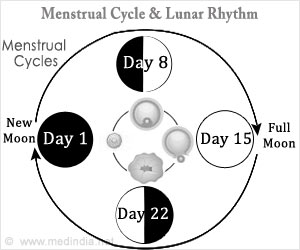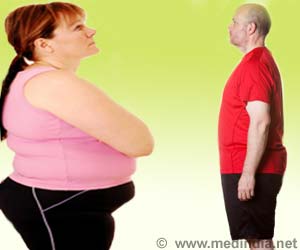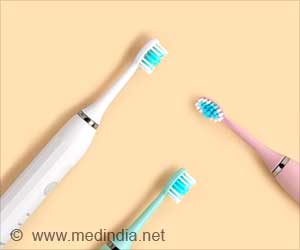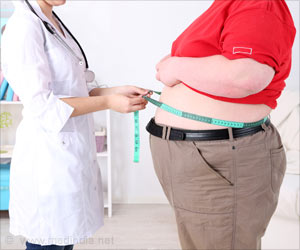Tired of period product confusion? We break down the good, the bad & the eco-friendly so you can bleed with confidence!
- Fragrance-free menstrual products are a must to prevent skin irritation and infections
- Menstrual cups and discs are eco-friendly but require comfort with vaginal insertion
- Lack of access to period products affects mental health and daily activities
A question for women's health: chemicals in feminine hygiene products and personal lubricants
Go to source).
"Scents might irritate the skin of the vulva. They can cause contact dermatitis or irritation," explains Megan Cheney, M.D., M.P.H., a gynecologist at Mayo Clinic.
Untreated gum disease may affect your brain health! Keep your mouth clean for a sharper mind. #oralhealth #medindia’
Pros and Cons of Menstrual Pads
Pads are the beginning point for many menstruators. Dr. Cheney notes that they are comfortable to use because nothing needs to be inserted into the vagina. However, they are not without drawbacks. Pads have the largest environmental impact of any menstrual product because they are made up of about 90% plastic (2✔ ✔Trusted SourceMenstruation: Environmental impact and need for global health equity
Go to source).
Some people find them bulky and inconvenient to use. They can also move around, especially when playing sports or exercising. Pads can also irritate the skin of the vulva, the outer region of the female genitals.
Advantages and Disadvantages of Tampons
Tampons are typically regarded as safe for most people to use. However, some people find them painful or difficult to install. Tampons can occasionally cause vaginal dryness or discomfort, particularly if not changed frequently enough. This can cause irritation, itchiness, and sometimes pain. When tampons are forced into the vagina, they might cause spasms."I tell my patients that- similar to if you have symptoms with intercourse penetration in the vagina- don't force use because then you could lead to more problems," according to Dr. Cheney.
Another worry is toxic shock syndrome (TSS), a bacterial infection that can develop when tampons are kept in the vagina for too long (3✔ ✔Trusted Source
Toxic Shock Syndrome
Go to source). The common rule is to not leave one for more than eight hours. However, TSS is rare.
"We don't see a lot of toxic shock syndrome and maybe that's due to increased safety of products that are being made or patients being more educated about toxic shock syndrome and not leaving tampons in," says Dr. Cheney.
This brings us to another prevalent fear: tampons becoming caught in your body. However, Dr. Cheney claims that there is no chance of a tampon traveling outside of your vagina and into other parts of your body.
"There's always an end to your vagina," says Dr. Cheney. "So as long as you are able to reach about the length of your finger into your vagina, you can find the tampon."
However, some people find it uncomfortable reaching into their vagina. If you can't find or remove a tampon, don't worry; a medical professional can do so using a special instrument if necessary.
FDA-approved tampons are produced from rayon, cotton, or a combination of the two. To avoid contaminating the water, dispose of it in a garbage container rather than flushing it. Some consumer organizations have expressed concern about the substances used in tampons. The FDA analyzes tampon safety and sets limitations on what can be contained in them. New York state began mandating tampon producers that they declare their components.
New reusable items are gaining popularity as individuals seek more environmentally friendly and economical period supplies.
Pros and Cons of Menstrual Cups
Cups are reusable, bell-shaped devices manufactured of medical grade silicone, rubber, or latex. They are placed in the vagina to collect menstrual blood. Cups may be emptied, cleaned, and reused several times. Cups are advertised by manufacturers to hold more blood than tampons and can be used for up to 12 hours. This eliminates the need for late-night changes or laundry the following morning after a leak."And some patients find it more comfortable and with less uterine cramping on their periods," according to Dr. Cheney.
Cups might be difficult to use, however. They must be set precisely to ensure a good seal; otherwise, they may leak.
"You have to do to learn how to properly insert them as low as is comfortable for you to get a good seal," according to Dr. Cheney. "You have to be comfortable with putting something in your vagina if you're going to use a menstrual cup."
Some menstruation cups include a ring at the end that may be pulled to remove the cup. To remove it, you must break the seal that prevents leakage. You may also need to plan ahead for cup removal. Some reviewers suggest removing cups in the shower- at least the first couple of times- in the event of a leak.
Because you need to clean the cup, you may want to use your own bathroom. To clean, first empty it into the toilet, then rinse the cup and wash with mild soap. Then it is ready for reuse. Boil the cup once a month to keep it sanitary.
Advantages and Disadvantages of Menstrual Discs
Menstrual discs resemble flexible Frisbees. Disks, like menstrual cups, can be left in the vagina for up to 12 hours and collect more blood than tampons do. However, they do require some practice. To insert, fold it in half like a taco and place the cup side down."Just make sure that it's up above your pubic bone in the front because that's what keeps it in place and not slipping right back out again," Cheney, the doctor, explains.
To remove the gadget, gently hook the rim with your finger. Users advocate taking it off in the shower until you get the hang of it. Cheney said her patients who utilize discs often enjoy them. However, you must be comfortable placing items in your vagina.
One advantage is that you can engage in sexual intercourse with the disk in place. Period discs can be disposable or reusable.
Advantages and Disadvantages of Period Underwear
Period underwear resembles your cute panties but includes absorbent layers to collect menstrual blood. One risk with these is the possibility of moisture, which can irritate the vulva. They must be changed when they become saturated. Absorbent underwear comes in a variety of thicknesses to provide more or less absorbency.That necessitates some advance planning. One user claims she carries extra pairs and a plastic bag to transport unwanted pairs home for washing. Some people prefer to use absorbent underwear as a backup to tampons. Even on high-flow days, some people sleep solely in their underpants.
How Much Do Women Spend on Feminine Products?
People typically use 3 to 6 tampons or pads per day during their period. This costs an average of $20 per month. When consumers cannot afford the products (which are taxed as luxury goods in some areas), they turn to alternatives such as paper towels or toilet tissue. These alternatives can raise the risk of infection and do not stay in place, which can lead to leakage. Another issue is using period products for longer than is recommended, which can lead to infections.Lack of effective period products can cause withdrawal from routine activities such as going to work or school. It is also related to a higher risk of depression.
References:
- A question for women's health: chemicals in feminine hygiene products and personal lubricants - (https://pubmed.ncbi.nlm.nih.gov/24583634/)
- Menstruation: Environmental impact and need for global health equity - (https://obgyn.onlinelibrary.wiley.com/doi/10.1002/ijgo.14311)
- Toxic Shock Syndrome - (https://www.ncbi.nlm.nih.gov/books/NBK459345/)
Source-Medindia










